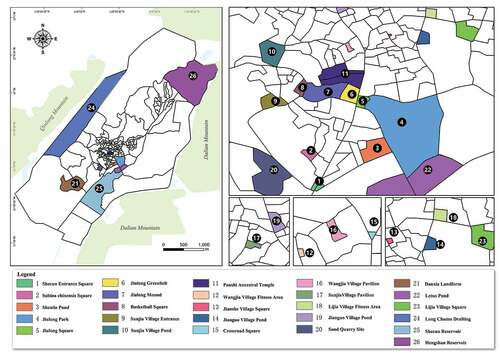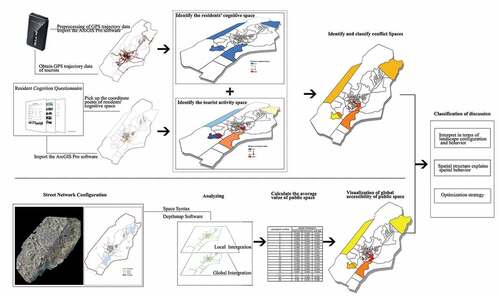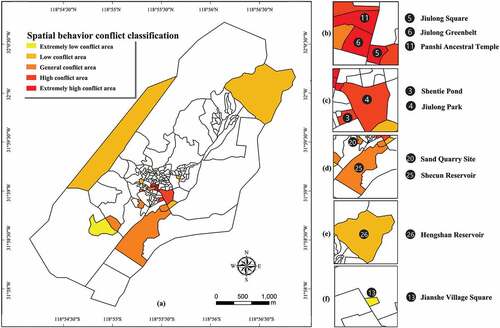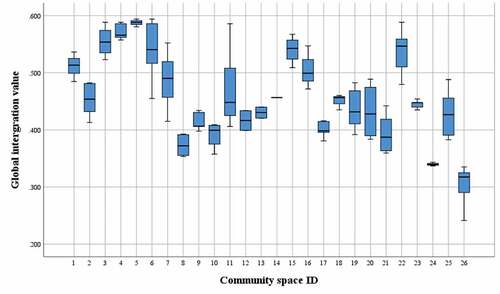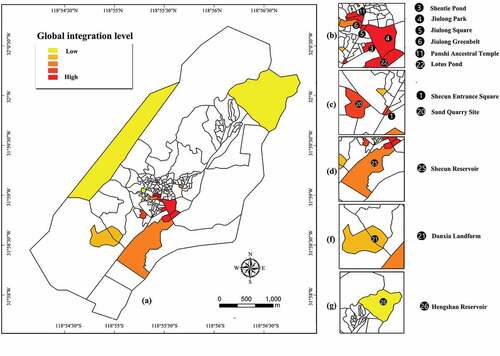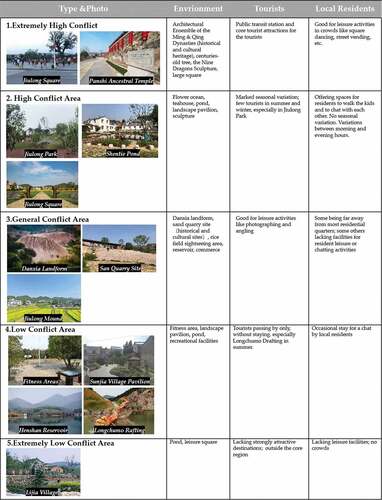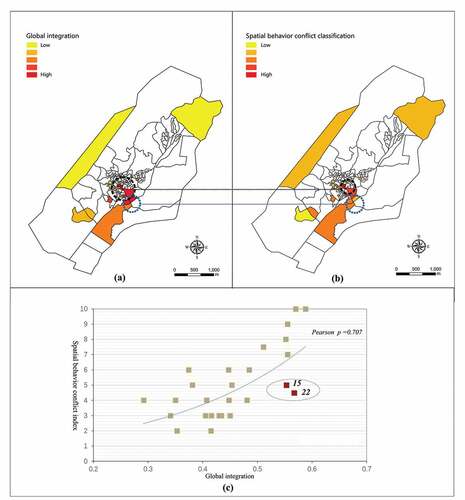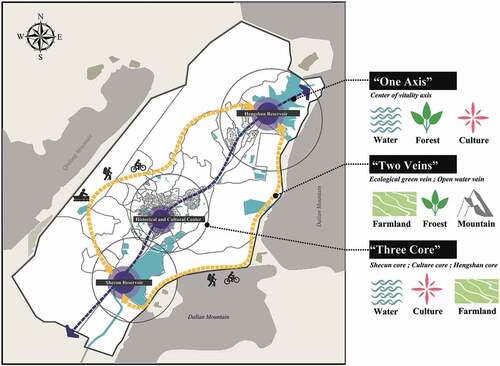Figures & data
Figure 1. Shecun Community (a) Location map of Shecun Community, Jiangning District, Nanjing city, Jiangsu Province; (b) The Shecun Community layout and surrounding environment.
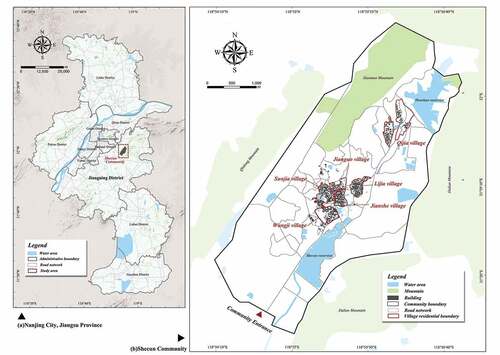
Figure 4. Spatial Distribution of Tourist Visits. (a) High visitor rate of community space; (b) Low visitor rate of community space. (c) the tourist visiting degreen of Shecun Community space.
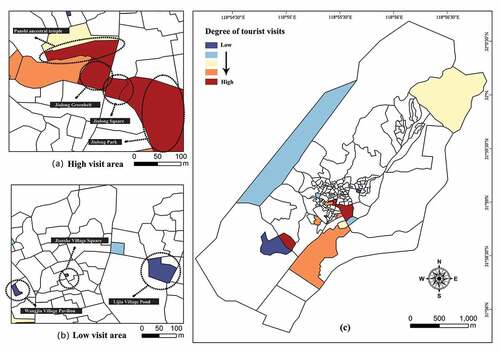
Figure 5. Spatial Distribution of Resident Cognition. (a)The community space with a high degree of resident awareness. (b)The community space with a low degree of resident awareness. (c)The resident cognition degree of Shecun Community space.
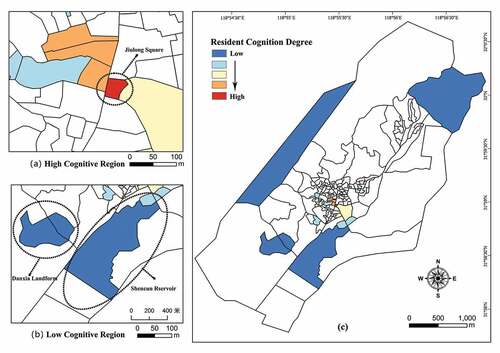
Figure 7. Global Integration and Local Integration of the Shecun Community. (a)The result of the Global Integration; (b)&(c) The result of the Local Integration; (d) Correlation analysis between spatial behavior conflict index and global integration degree.
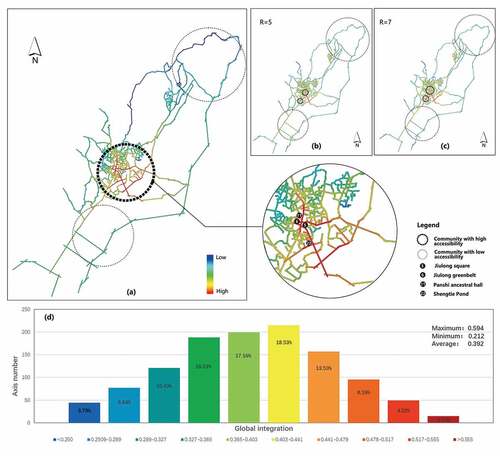
Table 1. Correlation analysis of spatial behavior conflict and spatial integration.

